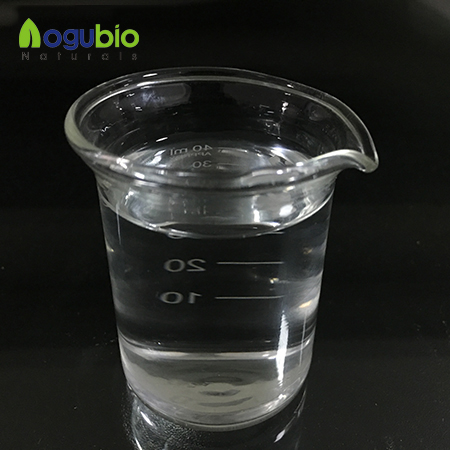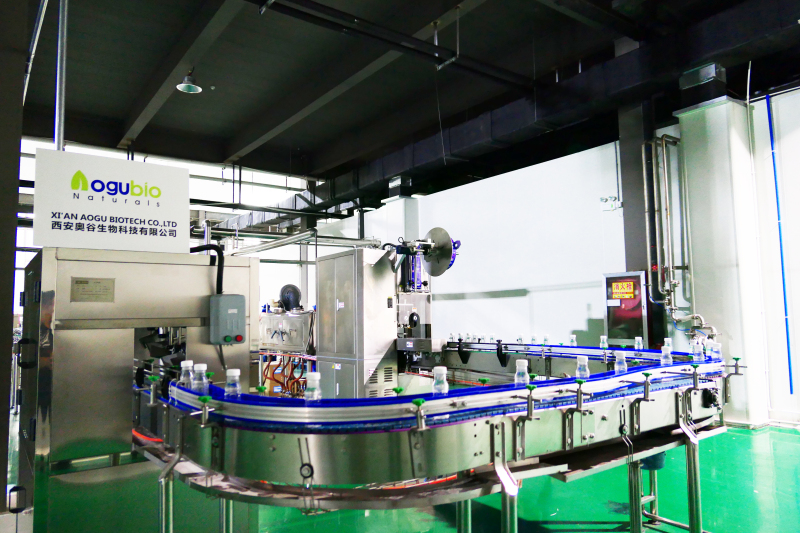Cosmetic raw materials sepiwhite MSH powder
Products Description
Sepiwhite™ MSH is an excellent skin lightener and brightener suitable for all skin types and ethnicities that promotes a more uniform and radiant complexion with results in as little as seven days. Studies have demonstrated an increase in skin luminosity and decrease in the number and color of hyperpigmented spots, and it can be combined with other active ingredients, such as niacinamide or AHAs. Sepiwhite™ MSH is a lipoaminoacid or vectorized essential amino acid developed from phenylalanine, an amino acid involved in melanin synthesis. MSH is an alpha-melanocyte-stimulating hormone (MSH) receptor agonist developed from this amino acid that inhibits the process of melanin synthesis from the hypothalamus to produce a reduction in melanic pigments in skin cells.
Benefits
- Promotes a more uniform and more radiant complexion
- Promotes reduction of number and color of age spots
- Demonstrated effectiveness for all skin types and ethnicities
- Promotes a more even skin tone
- Reported visible increases in skin luminosity and brightness
- ECOcert
- Preservative free, paraben free phthalate free
- Readily biodegradable
- Non-phototoxic
Application
- Anti-aging products for face and body, including gels, emulsions, and toners
- Daily skin rejuvenating products, like sera, targeted treatments, and moisturizers
- Revitalizing products such as toners, gels, masks, and eye products
- Skin lightening make-up removers
- Pressed and loose mineral make-up powders, including foundations and highlighters
Formulation Guide
- Use 0.2% in combination with another brightener, otherwise up to 2% in the heated water or heated oil phase of a formulation at more than 60°C (140°F).
- In a product with pH 5 or lower, incorporate into any type of formula.
- In a product above pH 5, but below 6.2, can incorporate with the use of up to 20% ethanol. Not the ideal pH range for this ingredient.
- In a product with pH 6.2 or higher, incorporation into any type of formula is possible.
- Compatibility & Stability
- Excellent stability in cosmetic products with no expected color or odor changes
- Compatible with formulas containing AHA and kojic acid (pH below 5)
- Compatible with formulas containing arbutin, hydroquinone, niacinamide, and those above pH 7
- Compatible with sunscreens
- Suitable for aqueous, hydroalcoholic, or hydroglycolic formulas
- Suitable for clear, colorless formulas
Is Sepiwhite MSH water-soluble or oil-soluble?
Sepiwhite MSH is an oil-soluble substance. This is because its chemical structure contains non-polar groups such as longer carbon chains, which makes it more soluble in oil phase systems. This oil-soluble feature also determines that it can play a better role in some oil-based cosmetic formulas.
What are the minimum and maximum doses of Sepiwhite MSH?
- Currently, there is no absolute fixed standard for the minimum and maximum dosage of Sepiwhite MSH. In cosmetics, its addition amount is usually determined based on the type of product, expected efficacy, and safety assessment.
- Generally speaking, in whitening cosmetics, its addition amount may be around 0.1% - 3%. But this is just a rough range, and it may be different in some special formulas or experimental products. In addition, different countries and regions may have different regulations on the use limit of cosmetic raw materials, which need to comply with local cosmetic regulations.
Should I use Sepiwhite MSH in my day cream?
- Sepiwhite MSH can be used in day creams. The main functions of day creams include moisturizing and protection, and whitening ingredients can also be added.
- Sepiwhite MSH can help reduce the production of melanin, and adding it to day cream can play a whitening role during the day. However, since day creams usually contain ingredients such as sunscreens, their compatibility with Sepiwhite MSH needs to be considered to avoid interactions that affect the stability and efficacy of the product. At the same time, other ingredients in day creams such as oils and emulsifiers also need to be reasonably formulated to ensure that Sepiwhite MSH can be evenly dispersed and play a role.
In order to achieve better results, should Sepiwhite MSH be used alone or in combination with other active ingredients? (How to use Sepiwhite MSH to maximize the whitening effect, alone or in combination with other ingredients?)
- In order to achieve better whitening effect, it is usually better to use it together with other active ingredients. Although Sepiwhite MSHalone has a certain whitening effect, its mechanism of action is mainly to reduce the production of melanin by inhibiting the signal transduction pathway in the process of melanin production.
- When combined with other active ingredients, it can play a whitening effect from multiple angles. For example, when combined with vitamin C and its derivatives, vitamin C can reduce the melanin that has been produced, while Sepiwhite MSHcan inhibit the production of melanin from the source, playing a synergistic role.
Which ingredients can be used together with Sepiwhite MSH to achieve the best effect?
- Nicotinamide: Niacinamide can prevent the transport of melanin to keratinocytes. When used in combination with Sepiwhite MSH, it can double inhibit the transport and production links after melanin is produced, enhancing the whitening effect. . It is generally recommended that the addition amount of nicotinamide is around 2% - 5%, combined with Sepiwhite MSH (0.1% - 3%). The specific proportion can be optimized according to product positioning and formula.
- Tranexamic acid (tranexamic acid): Tranexamic acid can inhibit the activity of tyrosinase and reduce the synthesis of melanin. Used together with Sepiwhite MSH, it can strengthen the inhibition of melanin synthesis process. In the formula, the added amount of tranexamic acid may be around 0.5% - 2%, which synergizes with Sepiwhite MSH to achieve better whitening effect.
- α-Arbutin: α-Arbutin can inhibit the activity of tyrosinase, and its whitening effect is more significant. Paired with Sepiwhite MSH, they complement each other in inhibiting key enzymes in melanin production. The amount of α-arbutin added to the formula is usually about 0.5% - 2%. When used in combination with Sepiwhite MSH, it can effectively improve the whitening effect.
When using products containing Sepiwhite MSH and other active ingredients, you also need to pay attention to the safety and stability of the product, as well as whether it is suitable for the user's skin type and other factors. At the same time, the research and development and production of cosmetics need to strictly comply with relevant regulations and standards.







.jpg)













